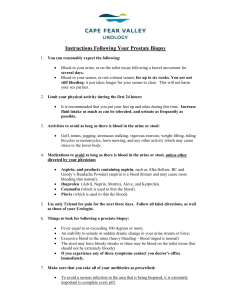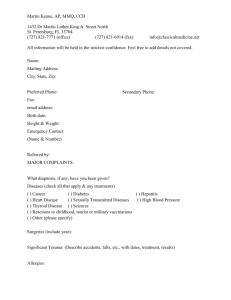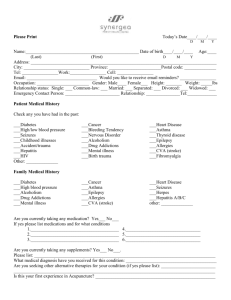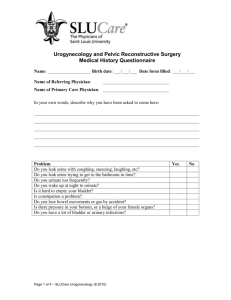answerspq_chapter_010 - Differential Diagnosis for Physical
advertisement
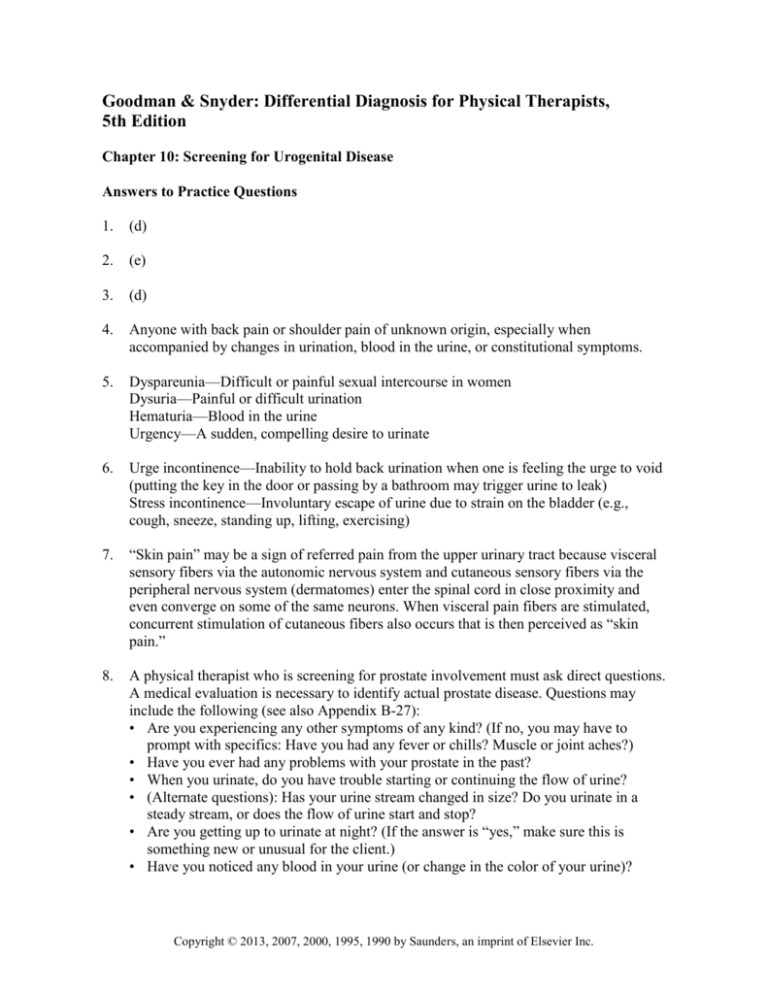
Goodman & Snyder: Differential Diagnosis for Physical Therapists, 5th Edition Chapter 10: Screening for Urogenital Disease Answers to Practice Questions 1. (d) 2. (e) 3. (d) 4. Anyone with back pain or shoulder pain of unknown origin, especially when accompanied by changes in urination, blood in the urine, or constitutional symptoms. 5. Dyspareunia—Difficult or painful sexual intercourse in women Dysuria—Painful or difficult urination Hematuria—Blood in the urine Urgency—A sudden, compelling desire to urinate 6. Urge incontinence—Inability to hold back urination when one is feeling the urge to void (putting the key in the door or passing by a bathroom may trigger urine to leak) Stress incontinence—Involuntary escape of urine due to strain on the bladder (e.g., cough, sneeze, standing up, lifting, exercising) 7. “Skin pain” may be a sign of referred pain from the upper urinary tract because visceral sensory fibers via the autonomic nervous system and cutaneous sensory fibers via the peripheral nervous system (dermatomes) enter the spinal cord in close proximity and even converge on some of the same neurons. When visceral pain fibers are stimulated, concurrent stimulation of cutaneous fibers also occurs that is then perceived as “skin pain.” 8. A physical therapist who is screening for prostate involvement must ask direct questions. A medical evaluation is necessary to identify actual prostate disease. Questions may include the following (see also Appendix B-27): • Are you experiencing any other symptoms of any kind? (If no, you may have to prompt with specifics: Have you had any fever or chills? Muscle or joint aches?) • Have you ever had any problems with your prostate in the past? • When you urinate, do you have trouble starting or continuing the flow of urine? • (Alternate questions): Has your urine stream changed in size? Do you urinate in a steady stream, or does the flow of urine start and stop? • Are you getting up to urinate at night? (If the answer is “yes,” make sure this is something new or unusual for the client.) • Have you noticed any blood in your urine (or change in the color of your urine)? Copyright © 2013, 2007, 2000, 1995, 1990 by Saunders, an imprint of Elsevier Inc. Answers to Practice Questions 9. 10-2 Visceral pain is not well differentiated because innervation of the viscera is multisegmental with few nerve endings (see Fig. 3-3). As was previously discussed in question (7), renal/urologic pain enters the spinal cord at the same level and in close proximity to cutaneous nerves in these multiple segments (from T10 to L1). Stimulation of these renal/urologic fibers can lead to stimulation of cutaneous fibers. As a result, renal and urethral visceral pain may be felt as skin pain throughout the T10-L1 dermatomes. 10. If the diaphragm becomes irritated as the result of pressure from a distended kidney (caused by tumor, cyst, inflammation), pain can be referred via interconnections between the phrenic nerve (innervating the diaphragm) and the cervical plexus (innervating the shoulder). Copyright © 2013, 2007, 2000, 1995, 1990 by Saunders, an imprint of Elsevier Inc.

